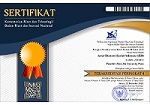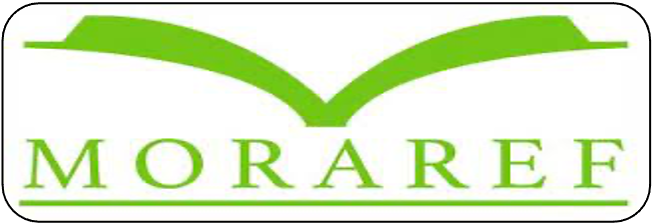Analisa Model Bisnis Bank Umum Syariah di Indonesia
Abstract
This research purpose is to find an alternative business model that can be implemented by Islamic bank in Indonesia, hence the Islamic bank can optimally growth. This research conducts several stages of research. Indepth interviews were conducted to get an idea of the need for a new Islamic Bank business model. The results of the interview are used as the basis for designing the business model of the Islamic Bank using the Analytic Network Process (ANP) method framework and the questionnaire model to obtain the required data. Based on the interview results, there are 4 (four) alternative islamic banking business models, namely Islamic Commercial Bank, Islamic Commercial Bank with Backed Asset, Integration of Islamic Commercial Bank and Islamic Social Bank, and Waqf Bank. The results of this study indicate that the Wakaf Bank Business Model (25.42%) is the main priority of the respondents in the islamic commercial bank business model.
Keywords
Full Text:
PDFReferences
Al-Qur’anul Karim
Andriansyah, Y. (2009). Kinerja Keuangan Perbankan Syariah di Indonesia dan Kontribusinya bagi Pembangunan Nasional. Jurnal Ekonomi Islam La Riba Vol III, No.2. Hal 181-196.
Antonio, M. S.(2001). Bank Syariah : Dari Teori Ke Praktik. Gema Insani Press
Ascarya, (2005) “Analytic Network Process (ANP): pendekatan baru studi kualitatif” makalah pada seminar intern program Magister Akuntansi fakultas Ekonomi di Universitas Trisakti, Jakarta
Ascarya, (2010) “Analytic Network Process (ANP): pendekatan baru dalam penelitian kualitatif” volume 2 (Aplikasi), makalah metodologi penelitian STEI-Tazkia, Bogor
Baraba.(1999). Prinsip dasar operasional Bank Syariah, Buletin Ekonomi Moneter dan Perbankan Vol. 2 No. 3. Hal 1-8.
Beck et al. (2013). Islamic vs Conventional Banking : Business model, efficiency and stability. Journal of banking and finance 37. pp 433-447.
Christensen CM. (2001). The past and future of competitive advantage. MIT Sloan Management Review. pp 105–109.
Dewani, S. L. (2015). Analisis Kepuasan Nasabah Terhadap Jasa Perbankan Branchless Banking pada PT. Bank CIMB Niaga, Tbk. Universitas Brawijaya.
Dimts, H. dan Abraham T. (2008). Expanding Outreach through Linkage Banking: The Case of the Commercial Bank of Ethiopia. Paper to be presented at the AFRACA workshop. July 22nd – 24th,. AddisAbaba, Ethiopia
Duce, D., Cooper C. S., Giorgetti D. (1998). "Reference Models for Distributed Cooperative Visualization." Computer Graphics Forum. pp 219-233.
Fitchett, D. (1999). Bank For Agriculture And Agricultural Cooperatives (BAAC), Thailand (Case Study.Olaf Weber. Social Banking: Products and Services).
Gorton, G. dan Frank S. (1999). “Corporate governance, ownership dispersion and efficiency: Empirical evidence from Austrian cooperative banking”. Journal of Corporate Finance 5.pp 119–140
Kahn, G. A. et.al. (2003). The Role of Community Banks in the U.S. Economy. Economic Review Second Quarter. pp 15-43.
Kim, W. C. dan Renee M. (2006). Blue Ocean Strategy (Strategi Samudra Biru). Penerbit Serambi.
King, B. (2012). Bank 3.0 Why Banking is No Longer Somewhere You Go, But Something You Do. Marshall Cavendish Business
Kraemer, K. L. et al. (2000). Refining and Extending the Business Model With Information Technology: Dell Computer Corporation. The Information Society. pp 5-21.
Kringelum, L,B. (2014). Business Models for Entrepreneurship? Wealth and Value Creation Through Strategic Entrepreneurship. Paper- DRUID Academy Conference. Denmark
Najamuddin, M. (2012). Cara Dagang Ala Rasulullah untuk Para Entrepreneur. Penerbit Diva Press. Jogjakarta
Osterwalder, A. dan Yves P. (2009). Business Model Generation. Amsterdam : Self Published ISBN: 978-2-8399-0580-0
Ritter, J. R.. (2003). Investment Banking And Securities Issuance. Handbook of the Economics of Finance. Elsevier Science B.V.
Roengpitya et al. (2014). Bank Business Model. BIS Quaterly Review.55-65
Anon. 2012. “Bank 3.0.” Bank 3.0.
Roengpitya, Rungporn, Nikola Tarashev, and Kostas Tsatsaronis. 2014. “Bank Business Models.” BIS Quarterly Review December(December):55–65.
Siswantoro, Dodik, Haula Rosdiana, and Heri Fathurahman. 2018. “Reconstructing Accountability of the Cash Waqf (Endowment) Institution in Indonesia.” Managerial Finance 44(5):624–44.
Tanthowi, J. (1983). Unsur-Unsur Manajemen Menurut Ajaran Al-Qur‟an. Penerbit Pustaka Al-Husna. Jakarta
Tanjung, H. dan Abrista D. (2013). “Metodologi Penelitian Ekonomi Islam”. Gramata publishing
Tanjung, H. (2016). Mengapa Ekonomi Syariah Penting Untuk Indonesia?.UIKA Press
Tapscott, D., Ticoll, D. and Lowy, A. (2000). Digital Capital – Harnessing the Power of Business Webs, London: Nicolas Brealy Publishing.
Tarmizi, E. (2013). Harta Haram Muamalat Kontemporer. PT Berkat Mulia Insani. Bogor
Tim Peneliti. (2012). Kajian Model Perbankan Syariah. Direktorat Perbankan Syariah. Bank Indonesia
Timmers, P. (1998) ‘Business Models for Electronic Commerce’, EM – Electronic Markets 8(2), pp. 3–8,
Tuch, A. (2006). Investment Banking: Immediate Challenges and Future Directions. Commercial Law Quarterly, Vol.20, No.4, pp 37-46.
Penjelasan Undang-Undang RI nomor 21 tahun 2008 tanggal 16 Juli 2008 tentang Perbankan Syariah
Undang-Undang RI nomor 21 tahun 2008 tanggal 16 Juli 2008 tentang Perbankan Syariah.
Zott, C., Raphael A. dan Lorenzo M. (2010). “The Business Model: Theoretical Roots, Recent Developments, and Future Research” IESE Business School-University of Navara (WP-862;).
Zott, C. dan Raphael A. (2009). Business Model Design: An Activity System Perspective. Long Range Planning (LRP) 43, pp 216-226
DOI: http://dx.doi.org/10.21927/jesi.2020.10(1).11-22

This work is licensed under a Creative Commons Attribution-ShareAlike 4.0 International License.












